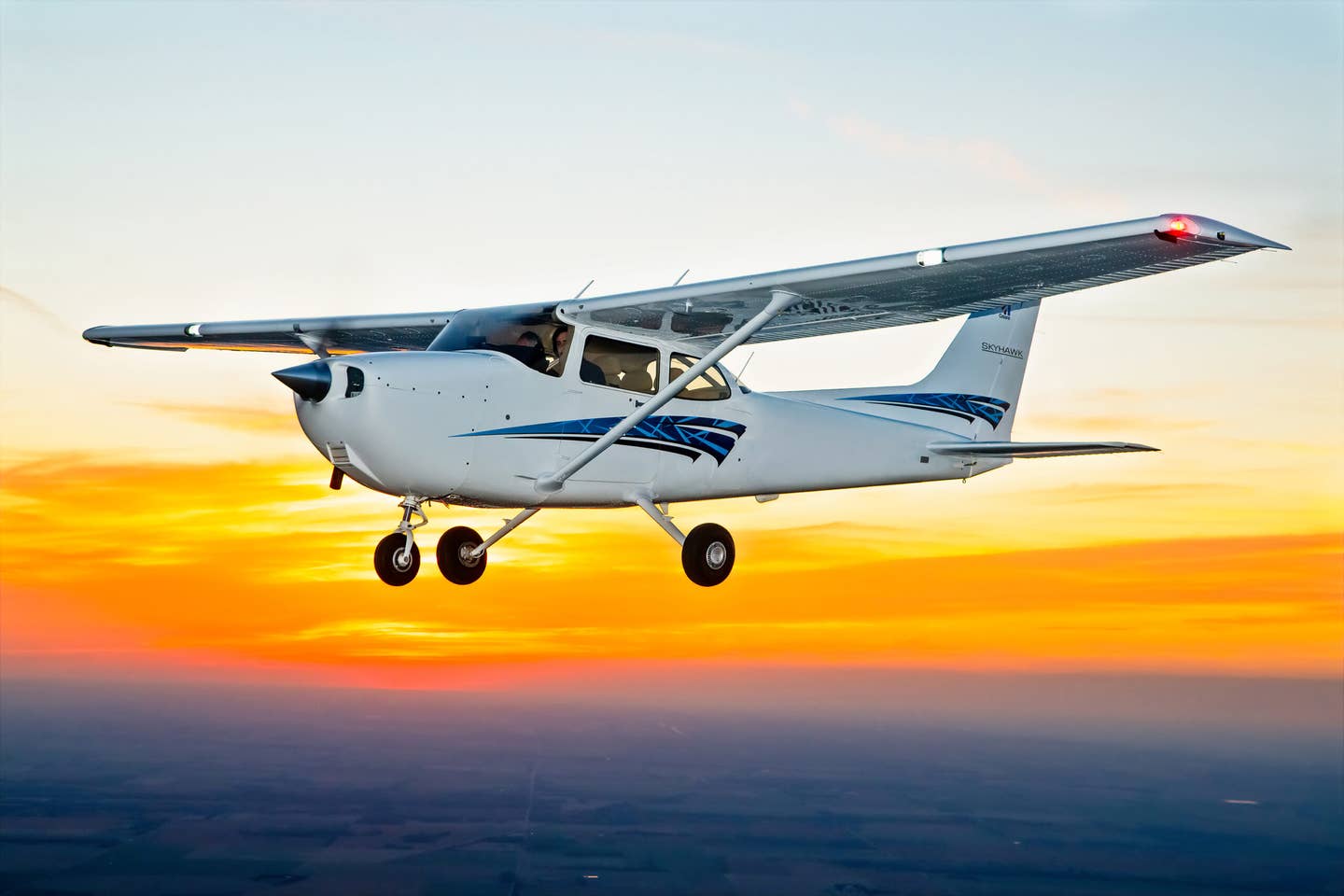
The Cessna 172 has had a rich and innovative history. [Courtesy: Textron Aviation]
The Cessna 172 was based on the Cessna 170 taildragger, and in 1956 the most notable difference between the airplanes was the gear. The tricycle gear that helped make the Cessna 172 an excellent training airplane was named Land-O-Matic by the marketing department. Cessna's idea to change the gear configuration most likely came from the popular tricycle gear STC for the 172 developed by Met-Co-Air in Fullerton, California. Another distinguishing feature that sets the early 172 apart from the 170 is the straight, finlike vertical stabilizer. The 1956 version of the 172 came out of the factory with a price tag of $8,295.
The instrument panel’s shape on early 172s was very similar to the Cessna 170’s, but in 1959 the panel shape began to morph into what we’ve become accustomed to in the 172. However, the control wheel placement remained in a higher position in those days, which disturbed the visual access to the instruments. Therefore, the control wheel later moved to a lower position on the panel, which not only improved the visibility to the instruments but also made its position more ergonomic.
The swept tail was introduced in 1960 and a new cowl design in 1961, creating a sleeker profile for the Cessna 172 and improving engine cooling. However, no performance changes were noted by the tail redesign. During this time, the instrument panel was modified to make the airplane IFR-capable. With all these changes, the premium version of the airplane got a new nickname—the Skyhawk.
Another marketing scheme for Cessna’s single-engine models was the Omni-Vision window. Omni-Vision is a wraparound rear window first introduced on the Cessna 182 and 210 models in 1962. The Cessna 172 fuselage was modified to fit the new window configuration in 1963, and the forward visibility was also improved with the installation of a one-piece windshield.
Like the Cessna 170, the original 172 used the six-cylinder, 145-horsepower Continental O-300 engine. In 1968, the powerplant was replaced with a four-cylinder Lycoming O-320 producing 150 hp. This was the engine originally intended for the 177 Cardinal. Later versions had a 160 hp O-320, and a 180 hp Lycoming O-360 also became a popular option.
After 10 years of suspended production owing to a soft market for new airplanes, and an onerous product liability environment, Cessna resumed production of the Cessna 172 in 1996 with the Cessna 172R model. This was the first time the Cessna factory made a full commitment to a fuel-injected 172 (the R172H XP was produced for a period of four years beginning in 1977 with a fuel-injected, 195 hp Continental engine). The new Skyhawk was originally equipped with a 160 hp Lycoming IO-360.
Many avionics panel modifications were made through the years, but arguably the most significant one happened in 2005 when the 172 was outfitted with an all-glass G1000 avionics suite. The first edition had MFD capabilities such as what is now SiriusXM weather, plus traffic and terrain, and was linked with a Bendix King KAP 140 autopilot. Versions beginning in 2008 feature the fully integrated Garmin GFC 700 autopilot.
As in most years, Cessna introduced a new paint scheme for the current-model Skyhawk. There were some worthy upgrades starting with the 2012 model. The ADS-B capable Garmin GTS 800 TAS provided directional audible alerts for traffic (for example, “traffic, 1 o’clock, high, two miles”) and automatically pulses the landing lights when a traffic target gets close. Customers could also add an EVS system to the 2012 Skyhawk.
Ten years later, for the 2022 model year, the Cessna 172S features the Garmin G1000 NXI integrated flight deck, with ADS-B In and Out, wireless database and flight plan loading, angle of attack indication, and the Garmin GI 275 electronic standby instrument.

Sign-up for newsletters & special offers!
Get the latest FLYING stories & special offers delivered directly to your inbox






